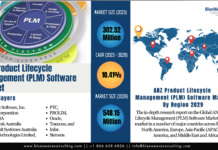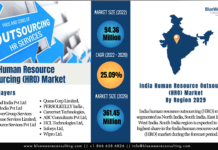Metaverse market is growing at a high CAGR because of the increasing acceptance of augmented reality in the healthcare sector as well as opportunities from adjacent markets are driving the metaverse market.
A recent study conducted by the strategic consulting and market research firm, BlueWeave Consulting, revealed that the Global Metaverse market was worth USD 40.7 billion in the year 2021. The market is projected to grow at a CAGR of 40.5%, earning revenues of around USD 439.0 billion by the end of 2028. The Global Metaverse market is booming because of the increasing acceptance of augmented reality in the healthcare sector, which lowers costs and improves results for people without endangering patient lives and the opportunities from adjacent markets. In addition, technologies like XR, AI, and analytics are anticipated to be very helpful for teaching and simulating applications in the aerospace and defense sector is a significant driver of market expansion. However, a lack of awareness and understanding among the general people of the metaverse may act as a huge restraining factor for market growth.
Opportunities from Adjacent Markets Coupled with Increasing Acceptance of Augmented Reality in Healthcare are driving the Metaverse Market
Technologies like XR, AI, and analytics are anticipated to be very helpful for teaching and simulating applications in the aerospace and defense sector. These technologies and the metaverse are anticipated to be beneficial for experiential training by utilizing data-driven applications in real-time. Thus, it is anticipated that the metaverse will facilitate the more effective and efficient transmission of precise skills and greater information retention by trainees throughout this vertical/enterprise. Airlines train their ground staff for pre-flight inspections using extended reality. The integration of the metaverse with XR can aid in simulations, aviation training, and weapon training, thereby boosting market growth.
The metaverse Market is being driven by the increasing acceptance of augmented reality in the healthcare sector, which lowers costs and improves results for people without endangering patient lives. PTSD, phobias, anxiety disorders, hallucinations, and delusions are problems that can be treated using metaverse in mental health. The way we seek help from coworkers, friends, family, or medical professionals when we are having a mental breakdown has changed because of technology. Virtual reality technology has the potential to improve people’s welfare, and companies in the sector are developing mental health apps for the metaverse. Researchers at EMPA have created hundreds of avatars of actual patients with chronic pain, and they are using them to predict and enhance the effects of medications and thereby boosting the market growth.
Request for Sample Report @ https://www.blueweaveconsulting.com/report/global-metaverse-market/report-sample
Lack of awareness in developing countries is the key Challenge in the Operation of Metaverse in the Market
The overall lack of awareness and understanding among the general people is one of the major challenges the metaverse must overcome. Virtual reality is one of the multiverse’s notions that most people can understand. However, for some people, the concept of this vast digital environment known as the “metaverse” can be frightening or even perplexing. Most people need to be made aware of what the metaverse is, even though we hear the term frequently these days. In addition, users need more awareness of service and security alternatives; the industry may encounter growth constraints. Additionally, businesses functioning in the industry have experienced cyberattacks, which create serious security issues. Through September 2021, over 500 million cyberattacks were reported, with more than 1700 attacks reported for each business, according to SonicWall.
Fashion Category Had the Biggest Market Share in Global Metaverse End-User Segment
The market is segmented based on offerings: asset marketplace, avatars, financial services, and virtual platforms. The asset marketplace is expected to have a high growth rate due to increased investments in bitcoins, Ethereum, NFTs, and other cryptocurrencies have caused the metaverse’s rapid growth in the asset marketplace segment. In addition, the rising penetration of smartphones and the rising number of app developers in the market will propel the growth of the virtual platform segment during the forecast period. In addition, based on end-user segmentation, the Metaverse market is divided into education, fashion, and healthcare. The Metaverse market’s fastest-growing area is anticipated to be the fashion section. Because they are aware of micro indicators like high purchasing power for virtual clothes in the immersive digital environment, the leading fashion and apparel firms in the world are now adopting and wagering on adopting the trend of digital clothing.
Regional Insight
The majority of users are in North America, where metaverse experiences are popular. A study found that 37% of Americans think that living in the metaverse would be more enjoyable than living in the real world, 38% think that the metaverse improves their lives, 47% use it effectively for socializing, and 48% do not feel overwhelmed by the multiverse. In addition, 40% of Americans believe that the metaverse has a purpose, and 57% think that it will become as popular as conventional social media platforms. India is experiencing great growth because of a large number of start-ups and organizations, making Asia-Pacific the region with the fastest-growing metaverse market. Additionally, 31.8% of people utilize the QQ metaverse platform seven days a week, according to China’s Social Sciences Academic Press and NetEase.
Impact of COVID-19 on Global Metaverse Market
Due to lockdowns and closures, users were constrained, which has propelled the metaverse market as an important lifestyle area for users, including interactive game landscapes and the growing use of mixed reality. The popularity of the metaverse is growing along with the use of blockchain, nonfungible tokens (NFTs), and digital assets. Furthermore, the rise in work-from-home culture and social isolation norms brought about by the COVID-19 lockdowns contributed to the period’s increased demand for metaverse platforms, which lasted after COVID-19 instances started to decline in late 2021. For instance, in November 2020, more than 30 million users tuned into a two-day virtual concert hosted by Sony Music Entertainment and Lil Nas X on the Roblox platform.
Competitive Landscape
Key players operating in the Global Metaverse market are Active Theory, Alibaba Cloud, Alphabet, Inc., Antier Solutions Pvt. Ltd., ByteDance Ltd., Decentraland, Epic Games, Inc., Globant, Lilith Games, Magic Leap, Inc., Meta Platforms, Inc., Microsoft Corporation, NetEase, Inc., Nextech AR Solutions Corp., Nvidia Corporation, Queppelin, Roblox Corporation, Tencent Holdings Ltd., The Sandbox, Unity Technologies, Inc., and other prominent players.
The in-depth analysis of the report provides information about growth potential, upcoming trends, and statistics of the global metaverse market. It also highlights the factors driving forecasts of total market size. The report promises to provide recent technology trends in the global metaverse market and industry insights to help decision-makers make sound strategic decisions. Furthermore, the report also analyzes the growth drivers, challenges, and competitive dynamics of the market.
Contact Us:
BlueWeave Research Blog
Phone No: +1 866 658 6826
Email: info@blueweavecons














